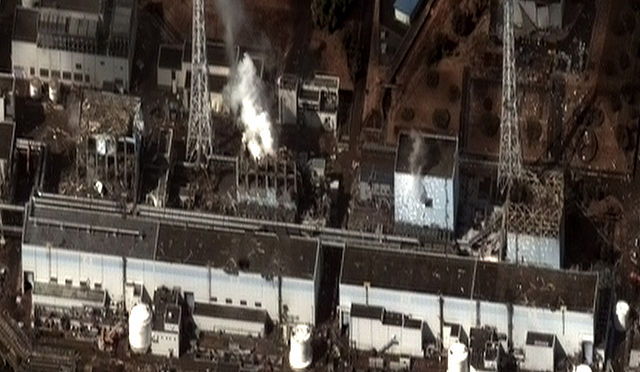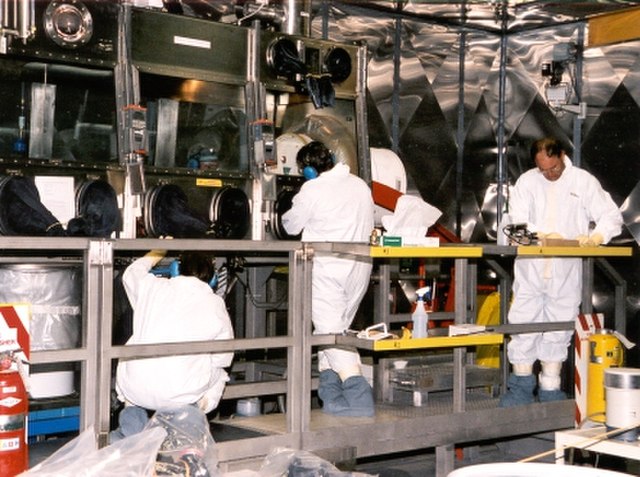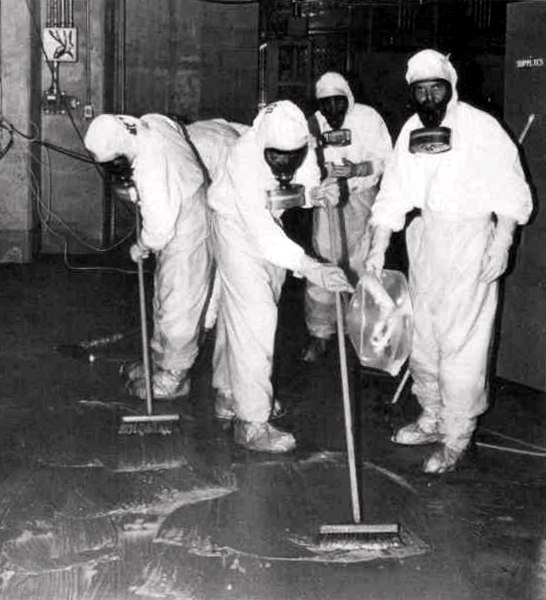The Goiânia accident was a radioactive contamination accident that occurred on September 13, 1987, in Goiânia, Goiás, Brazil, after an unsecured radiotherapy source was stolen from an abandoned hospital site in the city. It was subsequently handled by many people, resulting in four deaths. About 112,000 people were examined for radioactive contamination and 249 of them were found to have been contaminated.
A photograph of the radioactive source involved in the 1987 accident.
Radioactive contamination
Radioactive contamination, also called radiological pollution, is the deposition of, or presence of radioactive substances on surfaces or within solids, liquids, or gases, where their presence is unintended or undesirable.
As of 2013, the Fukushima nuclear disaster site remains highly radioactive, with some 160,000 evacuees still living in temporary housing, and some land will be unfarmable for centuries. The difficult cleanup job will take 40 or more years, and cost tens of billions of dollars.
Large industrial glovebox in the nuclear industry
Geiger-Muller counters being used as gamma survey monitors, seeking radioactive satellite debris
A clean-up crew working to remove radioactive contamination after the Three Mile Island accident.





